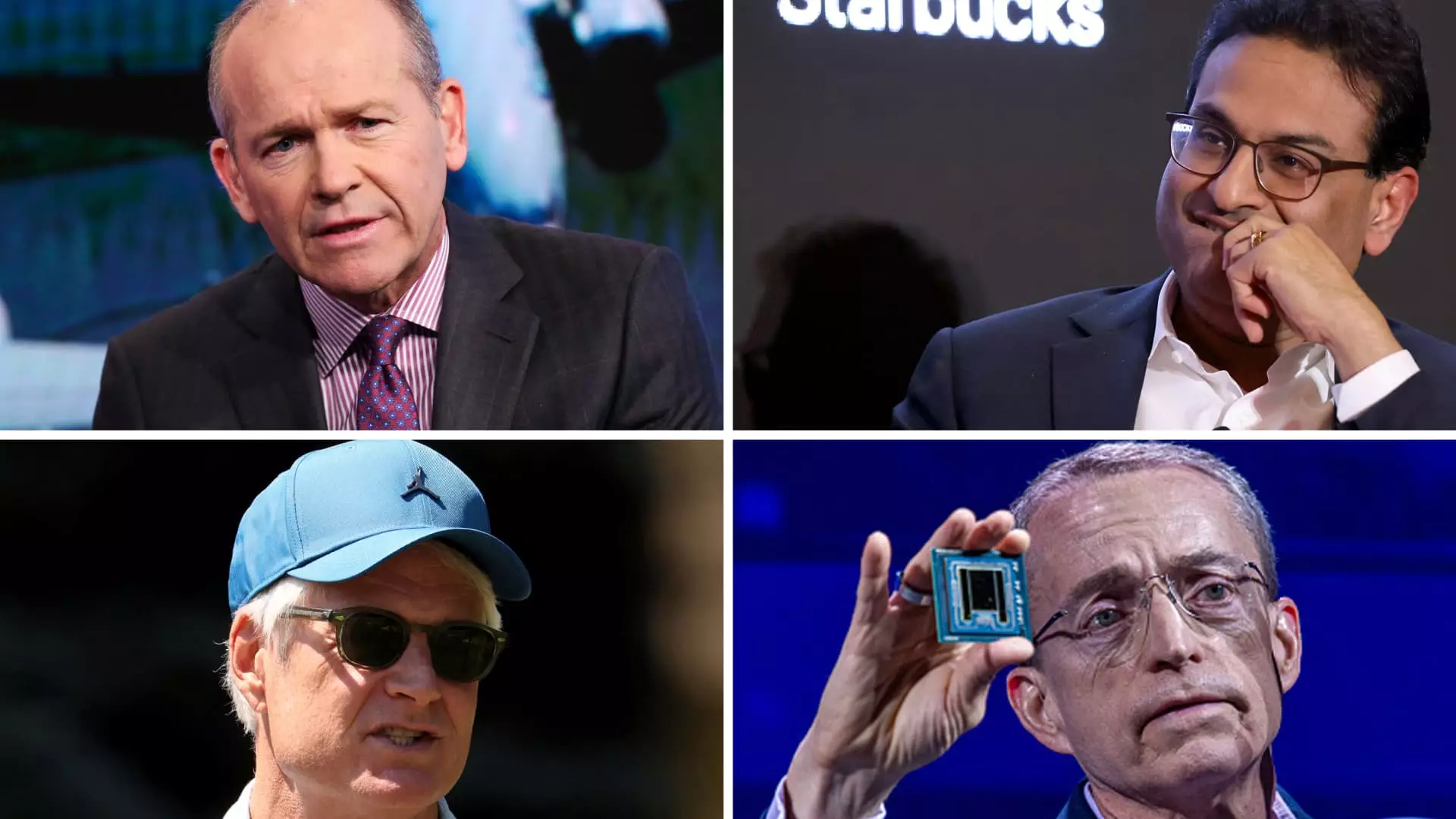In a striking trend observed throughout 2023, U.S. public companies have reported a significant turnover of chief executives, marking a year of unprecedented leadership changes. An analysis from Challenger, Gray & Christmas reveals that 327 CEOs have stepped down or been removed from their positions by November, highlighting a dramatic increase of 8.6% from the previous year. This figure represents the highest number of CEO transitions since the firm began tracking such changes in 2010.
The wave of executive changes affects prominent companies across various sectors, including giants like Boeing, Nike, and Starbucks. These organizations, long considered leaders within their respective industries, now find themselves reassessing their leadership amid a backdrop of fluctuating sales and boardroom pressure. This increased turnover suggests a shift in corporate tolerance for underperformance, particularly during a period of economic recovery in which consumer spending has remained robust. As Clarke Murphy, managing director at Russell Reynolds Associates, asserts, the costs associated with capital and the rapid pace of transformation in the market have hastened the exit of underperforming executives.
Historically, the COVID-19 pandemic saw a slowdown in CEO changes as organizations grappled with lockdowns, remote work, and widespread economic uncertainty. Nevertheless, these past years have also ushered in a new era of challenges, including rising inflation, increased labor costs, and shifting consumer preferences, forcing boards to reevaluate their leadership strategies more critically.
Notably, customer-centric firms have demonstrated considerably higher turnover rates compared to industries such as oil and gas or utilities, where leadership tends to be more stable and long-tenured. The implications for companies that depend heavily on consumer sentiment and trends are particularly stark; a misstep in leadership can have swift and adverse effects on market performance. Consumer brands that falter in meeting expectations can quickly find themselves facing a leadership reckoning, as evidenced by recent high-profile changes in executive roles.
Despite the overall decline in the number of public companies, the increase in CEO turnover underscores a crucial point: market competitiveness has intensified. As companies face prolonged scrutiny from investors and stakeholders, the margin for error in CEO performance has diminished. This scrutiny is likely to continue as boards become more impatient with stagnant results, driving even more rapid leadership changes.
Case Studies in Corporate Leadership Changes
Several notable instances of executive turnover illustrate the current landscape. Intel’s recent dismissal of CEO Pat Gelsinger reflects the heightened competitive pressure faced by the semiconductor giant amidst a surge of advancements in artificial intelligence by rivals such as Nvidia. Gelsinger’s tenure was marred by a decline in the company’s market share, and it remains to be seen who will step in next to potentially rectify the situation.
Boeing similarly faced tumultuous leadership changes, with the exit of Dave Calhoun following ongoing safety issues that plagued the airline. His successor, Kelly Ortberg, was brought out of retirement to instill stability in a company that has been marred by crises and customer dissatisfaction, especially in light of a recent incident involving the Boeing 737 Max. This shift illustrates how conditional market factors can accelerate leadership turnover despite a long-held reputation for reliability.
Starbucks’ decision to hire Brian Niccol, the CEO of Chipotle Mexican Grill, signifies a strategic move aimed at reinvigorating the coffee chain’s brand identity amidst declining sales. Niccol’s fresh leadership and innovative strategies have already inspired positive market reactions, demonstrating the importance of adapting to consumer demands.
Conversely, companies like Peloton and Kohl’s provide cautionary tales: both have experienced substantial leadership changes amid plummeting stock values and prolonged sales downturns. The series of CEO resignations at Peloton highlights the challenges of recovering market confidence after the post-pandemic decline, while Kohl’s leadership transition aims to address 11 consecutive quarters of declining sales performance.
The remarkable trend of CEO turnover in 2023 offers crucial insights into the dynamics of corporate governance and market expectations. As companies worldwide navigate the post-pandemic landscape, the implications for leadership strategy will be profound. The growing emphasis on results and performance will likely encourage boards to adopt more aggressive stances when assessing executive accounts, thereby reshaping the nature of corporate leadership in the foreseeable future. This development, while challenging for those in leadership positions, ultimately serves as a wake-up call for companies to remain agile and responsive to the ever-evolving market landscape.

